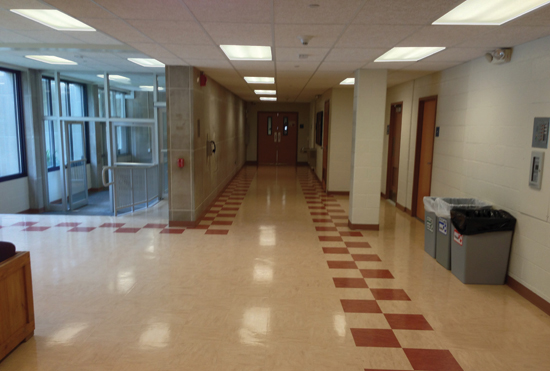Creating Healthy Learning Environments
Human Impacts of School Environments
With the presence of potentially harmful substances in school buildings, is there any impact on students, staff, or teachers? To answer that question, highly respected medical and scientific organizations worldwide have begun tracking the impact of exposure to some of the toxic chemicals we have described. These organizations include medical organizations such as the U.S. National Institutes of Health, Harvard School for Public Health/Harvard Medical School, and the Asthma Regional Council of New England (ARC). It has also included organizations specifically focused on buildings and the environment such as the Healthy Building Network, the U.S. Green Buildings Council (USGBC), and the Center for Health, Environment & Justice (CHEJ). Even state legislatures in California, New York, and elsewhere have initiated investigations into human impacts from material exposures. These efforts have revealed a number of findings concerning health concerns among children that have been documented to be on the rise.
First of all, some studies have found that children are especially vulnerable to chemical toxins emitted from materials and substances in buildings. In particular, children consume more food, liquid, and air for their size and body weight than adults, making them more susceptible to the absorption of chemicals that can potentially harm their still developing immune systems, brain functions, metabolisms, endocrine systems, etc. Based on their highly tactile and oral nature (e.g., sitting on, playing with, touching, or even tasting objects or surfaces containing toxic substances), children are at greater risk of breathing in or ingesting toxic chemicals emitted by suspect building materials, maintenance products, and school supplies. Compounding this vulnerability is the fact that children are spending more time in school buildings than ever before. At 35 to 40 hours per week for 9 to 10 months per year, along with an increasing amount of time spent in school settings for after-school activities, daycare, meals, and community events, children are spending the equivalent of two to three years of their formative lives in school buildings with the potential for toxic exposure.

Photo courtesy of Forbo Flooring Systems
Unless carefully selected and understood, building products used in educational settings may contain ingredients and chemical compounds that are known to be harmful to both the environment and to human health.
Connections to Chemical Compounds
Different studies have shown a link between certain chemical compounds and specific diseases or disorders. Some of these are summarized as follows: (References to studies can be found on page 5.)

Photo courtesy of Forbo Flooring Systems
In educational settings, building materials that contain harmful chemical compounds have been linked to numerous adverse health conditions in students, teachers, and staff.
Autism. A 2009 study found a statistically significant link between polyvinyl chloride (PVC) and phthalates found in building materials and school/office supplies and the incidence of autism spectrum disorders, concluding that children continuously exposed to these toxins may be twice as likely to have autism. Cases of autism spectrum disorders have been documented to increase by 78 percent since 2002 and currently affect 1 in 88 children, a number still on the rise.
Asthma. A Healthy Building Network study identified a dozen chemicals commonly used in building products, foam insulation, paints, adhesives, floors, and carpets that can lead to the development of asthma in children, especially the presence of phthalates, which can impair the development of the lungs and immune system. The prevalence of asthma among children nearly doubled between 1980 and 1995 and currently affects 7 million children, or 1 in every 13. Considered the #1 chronic childhood illness, asthma is a leading cause of school absenteeism, with some 14.7 million school days missed each year due to this condition.
Learning disabilities. A recent South Korean study found that children with higher concentrations of two common phthalates in their urine had lower IQ scores than their peers. The number of children classified with learning disabilities increased by 191 percent between 1977 and 1994. Currently, as many as 1 in every 6 children is believed to have a learning or developmental disability of some kind.
Attention deficit. Exposure to phthalates has been linked to the rise in attention deficit hyperactivity disorder (ADHD), which has increased six-fold between 1985 and 2000 and may affect as many as 1 in 6 children today.
Childhood cancers. Leukemia, brain cancer, and other childhood cancers have increased by more than 20 percent since 1975 and early puberty and other signs of endocrine-related disruption is now experienced by 1 in 10 girls, a condition which poses a risk factor for breast cancer later in life.
Obesity. Exposure to phthalates has also been linked to obesity, which currently affects 16 to 33 percent of U.S. children and teenagers.
Laurie Stillman of the Asthma Regional Council of New England has summed it up this way: “VOCs may contribute to any of a full range of health effects, including triggering an asthma attack in someone who already has asthma, gradually leading to the development of asthma in someone who doesn't have it, or contributing to health effects ranging from minor irritation to cancer.” To add insult to injury, a recent study found childhood health issues caused by environmental hazards such as air pollution and exposure to toxic chemicals cost the U.S. $76.6 billion in 2008 and have been on the rise.












